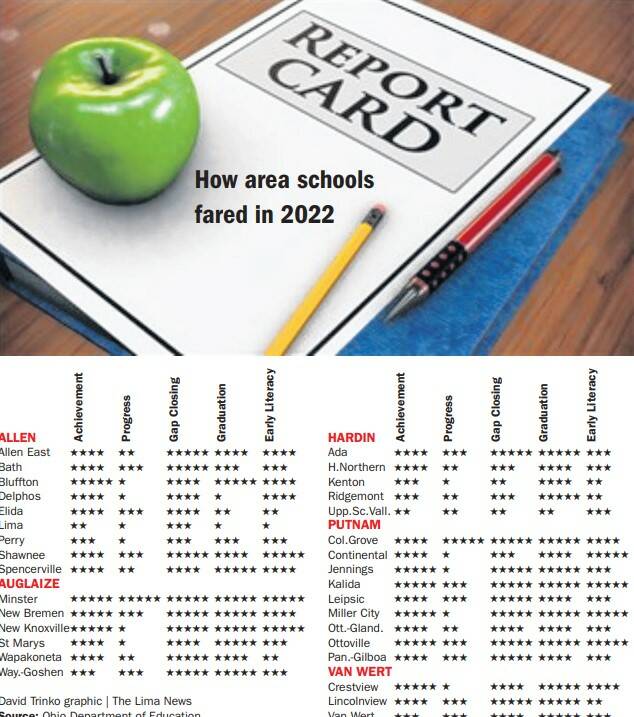LIMA — Teachers collecting data is as old as school itself. Writing scores in a grade book to calculate final grades or examining standardized tests scores to evaluate district-wide achievement has been a standard in education.
Stephen H. White in his book “Beyond the Numbers” said, “Data is only as valuable as our ability to respond to the needs that it reveals.”
Local schools are now tasked with analyzing Ohio test scores to make the necessary improvements for students. Decision making, based on data in education, can transform classrooms.
Data and analytics play a vital role in identifying inequalities in education. Achievement gaps persist between students from low-income households and those from high-income households, and with an increasing wealth disparity, the number of children deprived of equal opportunities in education grows.
Schools use collaborative approaches with teachers and administrators to make data work for them. Administrators and teachers may study standardized test scores, attendance data and behavior data to make decisions for their schools. The analysis of data can catch students falling through the cracks, identify gaps in curriculum coverage and better align the curriculum across departments and grades.
Teresa Gantz, Director of School Improvement at the Lima City Schools, said, “We do a lot of work that people don’t know about. We’ve been doing professional development. We’re making sure the teachers get professional development; that it’s being done correctly. They’re getting face-to-face training. We’re training all of our intervention specialists this year. We’re doing early intervention assessments. We do standards mastery throughout the year. We will be doing a lot of formative assessments.”
Analyzing test data allows teachers to identify causes of student success and failure. Once those causes are located, teachers can devise solutions to address them. Once such discoveries are made, a teacher can design exercises and activities for students in their trouble areas that help improve their performance.
Amber Straub, Director of Development and Assessment at Shawnee Local Schools explained a part of their data analysis: “So is there a reporting area that we are low in? When do we need to teach it? Do we need to rearrange things? Do we need to spend more time on this and less on something else?”
Both teachers and students stand to benefit from the continuing analysis of data. Teachers can work toward incorporating data-driven instruction into their work and make use of the many new tools designed to help them use data to work efficiently and improve student performance.
Julie Simmons, Director of Curriculum, Instruction, Assessment, and Professional Development at Elida Local Schools summarized briefly the data analysis process at Elida. “Reflecting on here’s what we had laid out for the year. Here’s what were our priorities, here was my instruction. So now that we have the results, let’s look back and how did we do? Did what we teach align with the standards? Do we need to make some adjustments? Do we need to spend more time on certain topics. We have a whole list of questions that the teachers are going to walk through, kind of a data walk. Then they will adjust their scope and sequence documents and priority standards. Then we approve those at the next board meeting. So it’s kind of a constant cycle.”
Using data and cultivating a deep understanding of the social justice issues many students face will prove vital in helping educators develop solutions that will level the playing field for all students.
The Ohio Department of Education switched to a new school district rating system for the 2021-22 school year, issuing one through five stars to schools in the areas of achievement, progress, early literacy, gap closing and graduation. Explore the ratings for each school district in the state, and how that compares to previous years at https://www.limaohio.com/infocenter/2022/09/15/interactive-database-ohio-school-report-cards-2021-22/.
Reach Dean Brown at 567-242-0409







